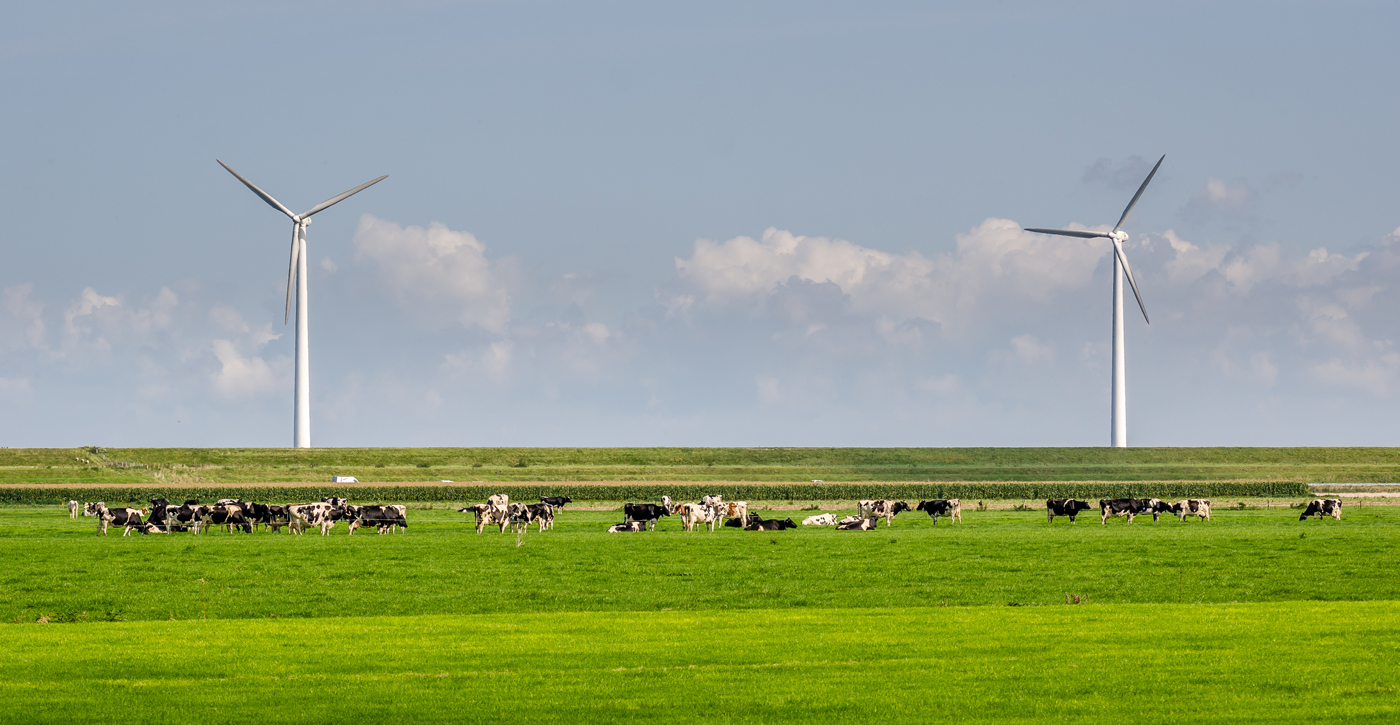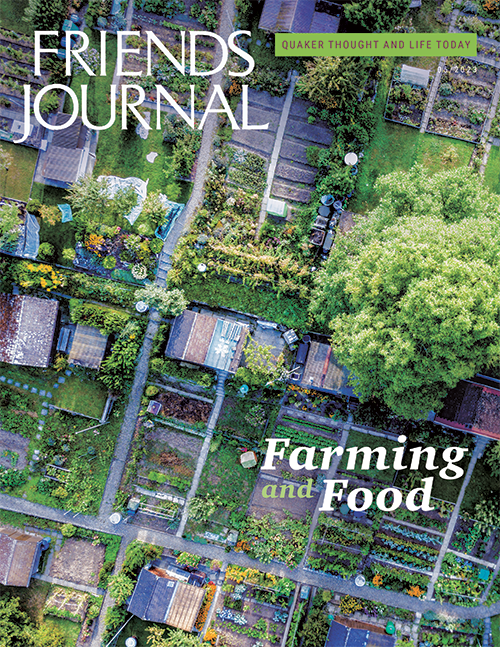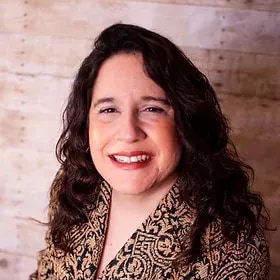An Interview with Jim Perkins
Quaker Jim Perkins runs a 25,000-acre ranch and farm, which he co-owns with his children and grandchildren in Elk, Greenwood, and Montgomery Counties, Kansas. He talked about faith and food production with Sharlee DiMenichi.
SHARLEE DIMENICHI: How does your Quaker faith influence how you run your business?
JIM PERKINS: Well, in the decision-making process, we listen to everyone. We treat our employees as equals. We try to make sure that their families are cared for and they get the proper amount of vacation time. And so they are not just servants; they are participants. We try to compensate them well. If we have a good year, my son David, who’s the farmer, will deliver to the elevator so many bushels of corn, soybeans, or wheat in each employee’s name as their year-end bonus.
SD: You’re a lifelong Quaker. Tell me about the development of your faith.
JP: I actually officially joined Friends in 1952. I was about 16. My grandmother was a delegate to the Friends World Conference in Oxford, England, celebrating the 300th anniversary of the founding of Friends. At the last minute, one of the delegates from Kansas could not attend, so they made me a delegate. While attending this conference, I had a very powerful religious experience. I came home a totally different person. I am deeply grateful for having made the trip to England.
We [Jim and his late wife Barbara] belonged for a long time to University Friends Meeting in Wichita, Kansas, which is a large pastoral meeting. Then about 25 years ago, we moved our membership to Heartland Friends Meeting in Wichita, Kansas, which is an unprogrammed meeting.
SD: What first inspired you to run a ranch and farm?
JP: We come from many generations of farmers and ranchers. My grandmother and grandfather Perkins came to Elk County, Kansas, in 1871 and 1879. They were not Quakers, but they started out with nothing and bought land. Land to them was next to God as sacred. And their theory was that as long as you had land, you had something.
My wife’s family came from a long line of Quaker farmers in Ohio. They came to Ohio in 1813 from Virginia. So the family is up to their seventh generation of land, which is now farmed by her nephews in Ohio.

SD: Tell me about your views on organic farming.
JP: I always laugh about organic farming. I know a Quaker family who lives on the west slope of Colorado. They have a peach orchard there. And they have the biggest, most beautiful, juicy peaches you can imagine. When I was out there, I said to my friends, “These are beautiful peaches.” “Oh, they’re organic!” she said. I looked at her and smiled. “Uh, organic?” “Well, they’re not hippie organic,” she said, “We have to spray them with chemicals.” I know enough about orchards to know you have to use many different sprays. People will not buy deformed, wormy-looking fruit.
My view is that organic food is for rich people. To the best of my understanding, there is not enough scientific research to prove that organic food is really safer for people to eat. There is a difference between farm fresh and organic. Farm fresh is directly from a farm to the grocery store.
SD: Please tell me, step by step, of the journey a cow takes from your ranch to someone’s table.
JP: We have a cow-calf operation. In other words, one of my sons is in the cattle business pretty much exclusively. His is a cow-calf operation. Every year, he grazes cattle in the summer before they go on to the commercial feedlot for final fattening.
The mamma cow has a calf either in the spring or fall of the year. The calf stays with its mother until it is about seven or eight months old. Sometimes the calves, after they are weaned, are grazed locally to gain another 250-350 pounds on the native Flint Hills grass, which from mid-April to end of July is very high in protein, and the cattle gain weight rapidly.
Then the calves are sent on to the commercial feedlots in western Nebraska, Texas, Kansas, and Oklahoma. These feedlots can feed the cattle and do a much better job than a small farm feedlot.
When we are ready to deliver the cattle to go on to the commercial feedlots, we start feeding the cattle in the corrals where we will load them out; the feed trucks we use have a pellet bin on the back. For a few days before delivery, we feed the cattle in the corral leaving the gates open for the cattle to move in and out. On delivery date, we do the same thing; only we shut the gate after the truck is out, and the few cattle managers (we call them that rather than cowboys) finish quietly, push the rest of the cattle into the corral, and shut the gate. We don’t “cowboy” our cattle like you see in the movies. Having the cattle used to the corral, we can load them and send them on to the feedlots with a lot less stress on the cattle.
Often the staff of the commercial feedlots will say, “Why are your cattle so calm?” Generally, they are unloaded with a little prairie hay from our Flint Hills grass and grain in the feed bunks. The cattle will walk over and start to eat, rather than roam and walk around the feedlot for several days before settling down and starting to eat.
Careful management of the cattle will eliminate bruises that would make the carcass less valuable. So good management is a win-win situation!
SD: So you talked a bit about financial stewardship. Can you tell me how you live out the stewardship testimony?
JP: Well, I’m one of those little quirky Quakers that hears that little voice. We went through the 1980s and had a very, very tough time financially: Land prices dropped by 50 percent; interest rates went sky high; and oil prices dropped from $30 a crude barrel to $8 a crude barrel in 60 days.
As we began to come out of that financial downfall, I was making modest contributions to the meeting but very insignificant. Then one Sunday morning in meeting, that little voice said to me I want more. So I added some more funds. And then, oh, maybe six months or a year later, that little voice said to me, “I want your tithe.” Okay. Then finally the little voice said to me, “I want as much as possible.” So I started giving a lot more than I was living on, a lot more. I’ve been very blessed. I’m joyful. It’s time to give back.
SD: You mentioned that you had a challenging time in the 1980s with your business. How did your spiritual life help you get through that challenging time?
JP: I had this little prayer called the light prayer: “The light of God surrounds me, the love of God enfolds me. The power of God protects me. The presence of God watches over me. Where I am, God is with me.” I kept this at my desk and whenever I got stressed or had negative phone calls, I read this prayer.
I learned that bankers are fair-weather friends. I don’t mean that unkindly, but when you didn’t need money, they had plenty to loan. When you were having financial troubles, they didn’t know who you were, or they would call your loans.
In the 1980s, I had to get a job. Guess who hired me? Two of my college friends who were bankers, who owned two banks in Wichita that I did not have a borrowing relationship with. They were buying loans from FDIC-closed banks. The loans were greatly discounted, so I could work with these borrowers to help them work their way back to financial stability.
[Perkins recovered financially. In addition to farming and ranching, he further developed his oil and gas operation. About 12 years ago, he had the opportunity to lease part of his ranch for the development of a wind farm which provides electricity for 73,000 homes in the southeastern part of the United States. The revenue from this project allowed him to set up, with the help of Everence (a Mennonite foundation) a charitable annuity lead trust, which is an extremely complicated trust.—SD]
JP: The bottom line is that instead of paying a lot of inheritance tax, over 20 years, I would give a similar amount to three of my favorite charities: Wichita Friends School, Westtown School, and the Earlham School of Religion.
This made it possible for my grandchildren to inherit the ranch tax-free, so if they choose to remain in the farming and ranching business, they can.
I have spent 58 years on boards of Quakers colleges, schools, and Quaker concerns. First, we have too many Quaker organizations, which we don’t have Quakers to staff nor endowments to support. So many times, our Quaker witness is watered down by leaders who are not practicing Quakers. The leaders have to spend too much time fundraising just to keep the organizations funded. So part of all my donations is directed to the endowment.
SD: What advice would you give to another Quaker who would like to run an agricultural business like yours?
JP: (laughter) Forget the idea and get a job!






Comments on Friendsjournal.org may be used in the Forum of the print magazine and may be edited for length and clarity.